We'd like to remind Forumites to please avoid political debate on the Forum... Read More »
UKPC yellow lines/hatched area
Comments
-
The one size fits all?Coupon-mad said:No.0 -
No, re-read what I told you to tell them.PRIVATE 'PCN'? DON'T PAY BUT DON'T IGNORE IT (except N.Ireland).
CLICK at the top or bottom of any page where it says:
Home»Motoring»Parking Tickets Fines & Parking - read the NEWBIES THREAD1 -
That sign also fails to offer a parking contract because it prohibits parking (as opposed to a contract offering it at a price).???Coupon-mad said:No, re-read what I told you to tell them.
0 -
I am now at the POPLA stage with this, I have read the newbies thread re popla and read two recent popla appeals/decisions that are similar to mine.
( https://forums.moneysavingexpert.com/discussion/6543232/euro-car-parks-ntk/p1 )
With this POPLA decision which was successful. ( https://forums.moneysavingexpert.com/discussion/comment/81134174/#Comment_81134174 )Also this thread which was unsuccessful at Popla.
below are the three photos UKPC have on their portal
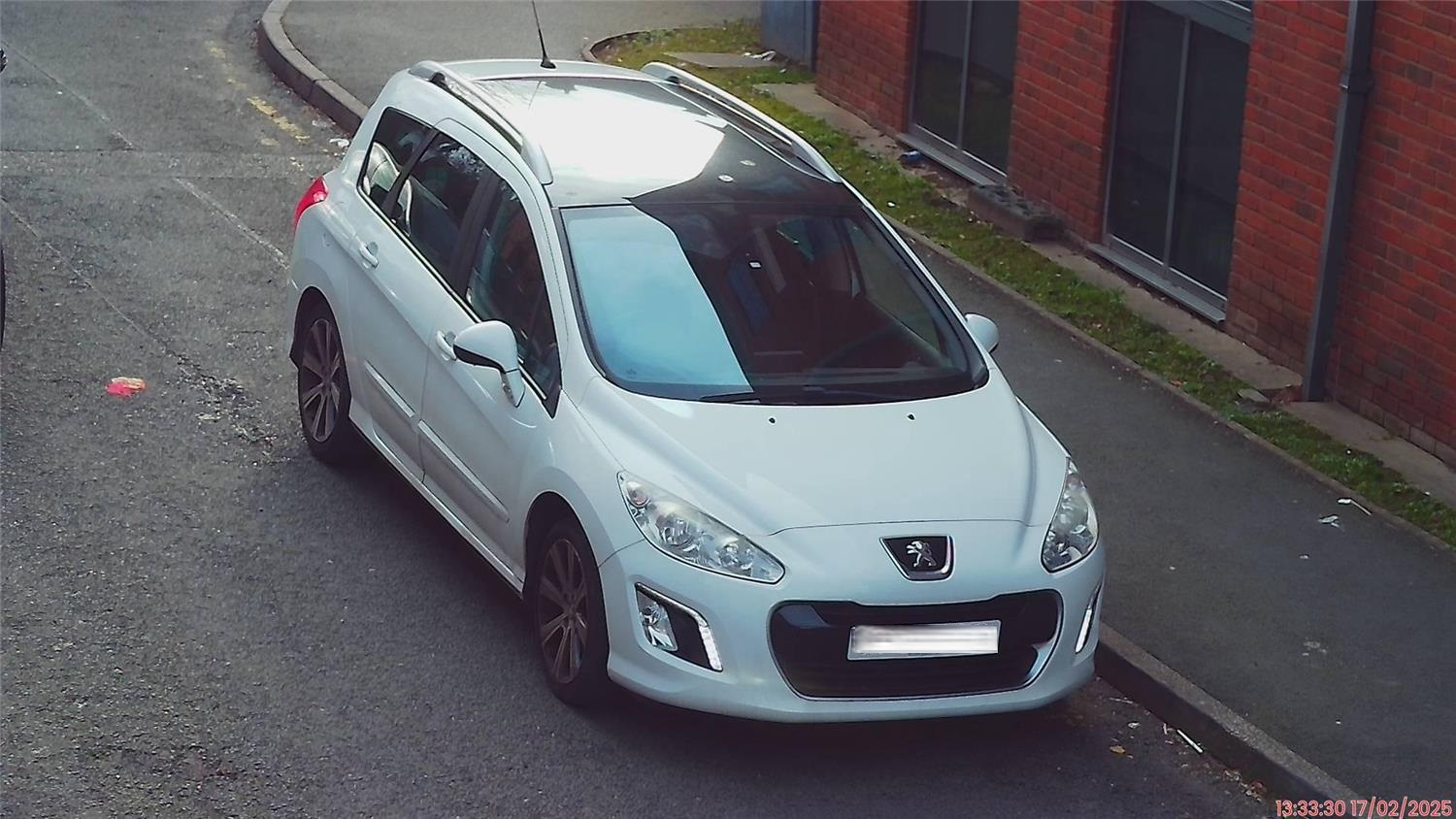
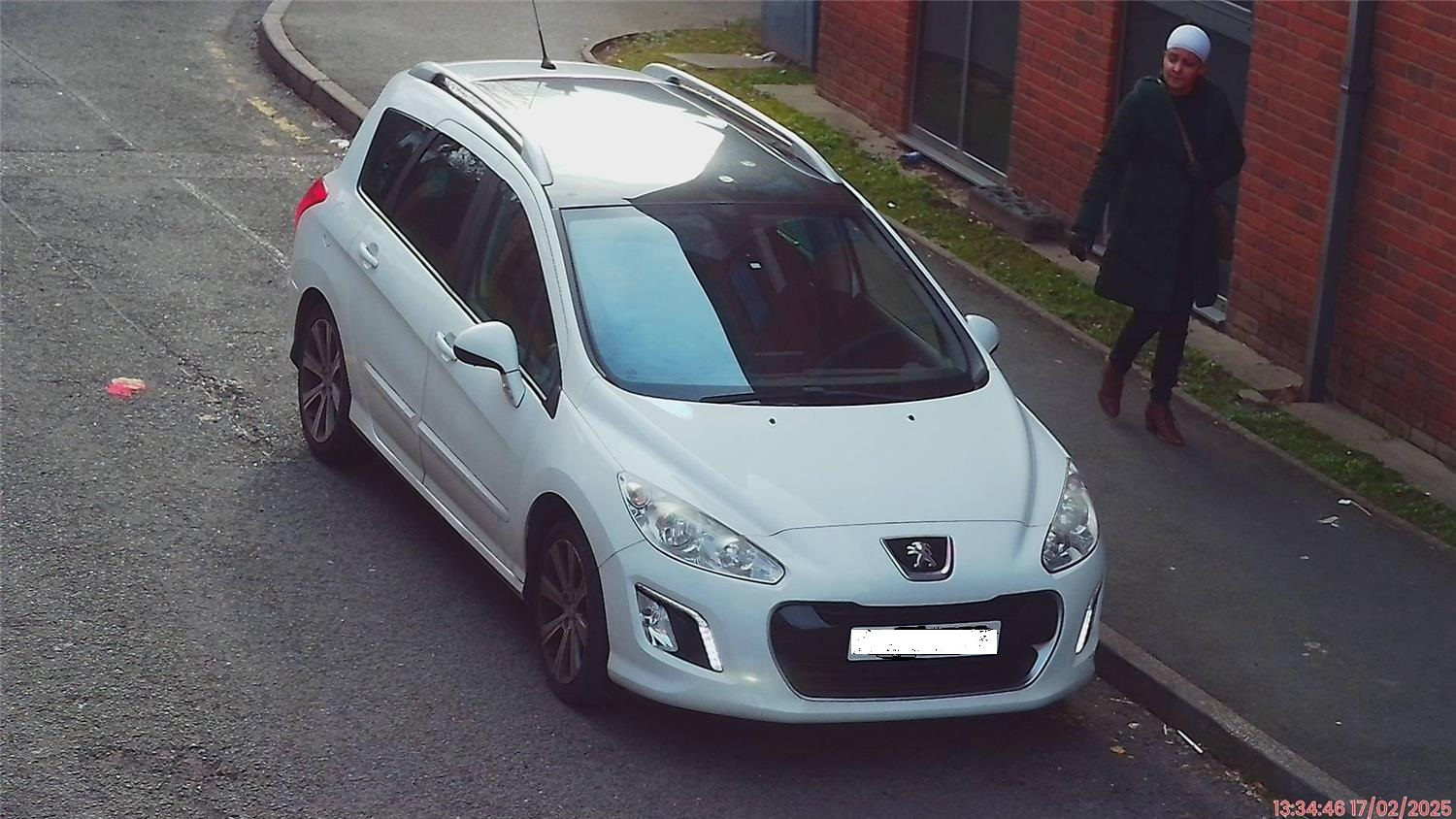

As mentioned previously duration of stay on NTK 2 mins 33 secs
Below are photos of UKPC signs that I have taken.
The sign below says "see notice in car park for terms and conditions and data use" the vehicle did not enter a car park.
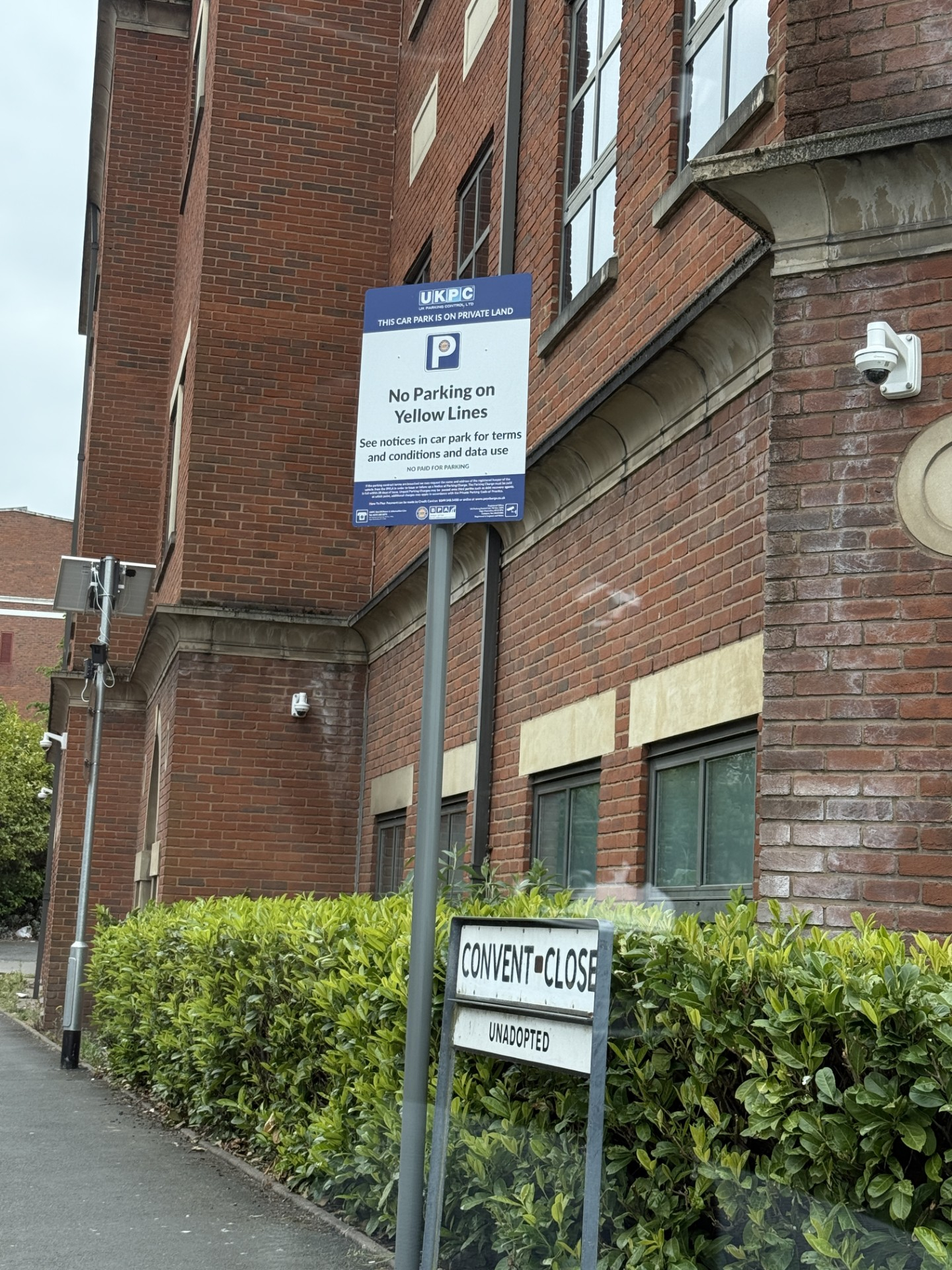
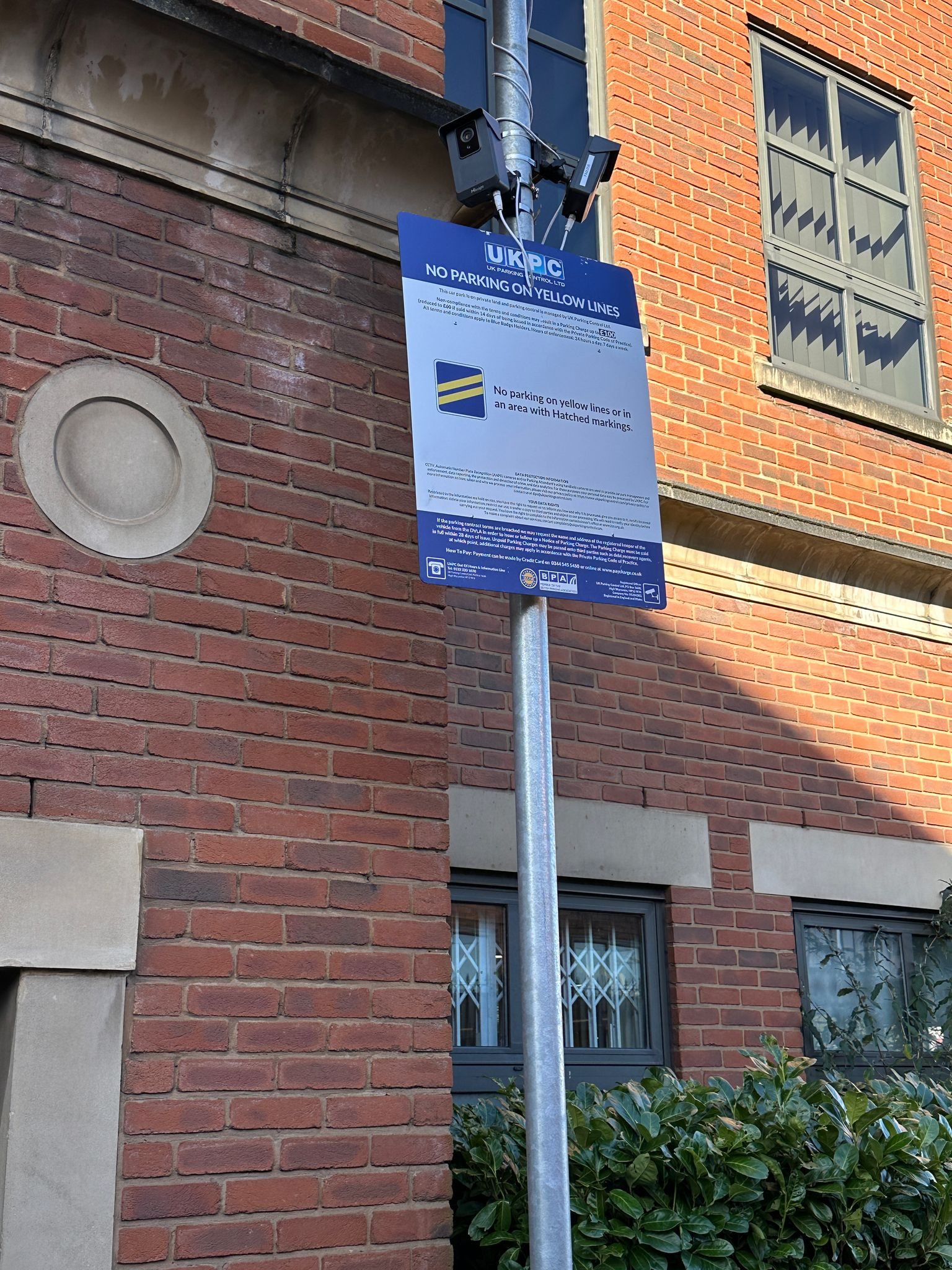
Vehicle proceeded up to the area marked in black and turned around and was waiting on the side of the road.
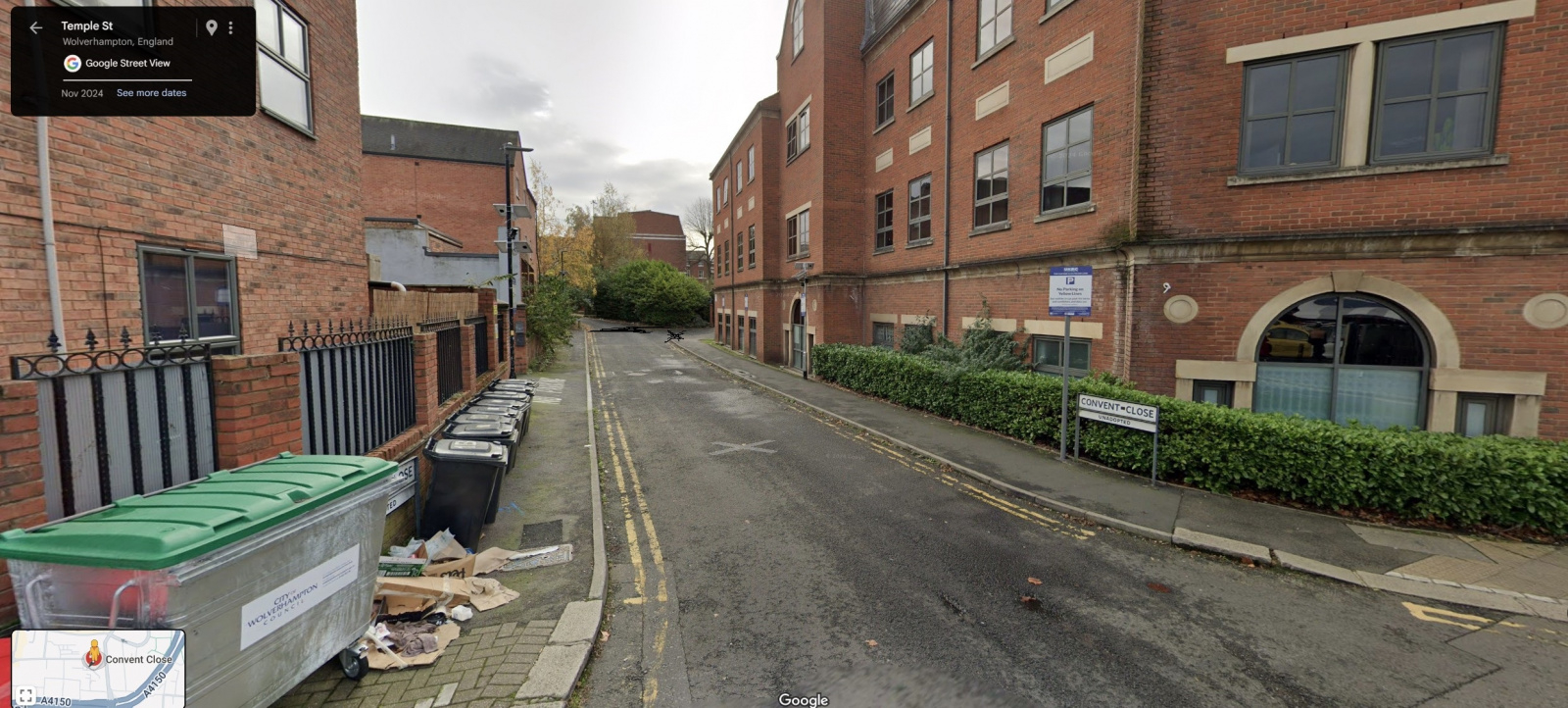
the below shows there is a car park further up into Convent Close.

The points to be used in the appeal to Popla are as follows:
1. None existent yellow lines
2. The signs are not prominent, clear or legible from all parking spaces and there is insufficient notice of the sum of the parking charge itself
2. No evidence of Landowner Authority - the operator is put to strict proof of full compliance with the BPA Code of Practice.
3. Grace Period – BPA Code of Practice – Non Compliance
4. Not PoFA (Protection of Freedoms Act) compliant as personal data has been accessed unnecessarily
are there any other points I should include?
0 -
Poor and inadequate markings
No parking contract on offer, forbidding signage0 -
This will be won by you at POPLA or UKPC will drop out.mo_1 said:Coupon-mad said:Have a look at their pictures online (in case there's a better angle?) and appeal laughing at their evidence.Tell them if they want to have a lurking camera trained on an unmarked kerb they could at least get the yellow paint out and mark it clearly first.


 Pictures above.
Pictures above.
Capturing cars stopped on a private road for 2 minutes is a predatory joke PCN enabled by the Joint Code of Practice farce.
Operators are increasingly using hidden 360° night vision CCTV cameras up on a wall, filming entire streets (and residents on foot) 24/7. This wasn't seen commonly even a year ago. This latest scourge is absolutely caused by the Joint Code.
This is illegal (excessive) surveillance - a matter that the ICO can confirm for the MHCLG in the blink if an eye - and this exact serious concern was raised in Parliament this week:
https://hansard.parliament.uk/commons/2025-05-06/debates/DE2A42ED-5A2B-49E3-835E-CFD8ADB3806B/ParkingRegulation
Martin Wrigley hit the nail on the head:
"Private parking companies seem to have licence to go much further than any other form of organisation.
Why can such companies set up automatic number plate recognition or CCTV, have cameras literally hidden on any old building—often really high on outside walls—to film entire streets and into the houses opposite, and have them running 24/7 with a 360° view using night vision, when councils or the police would never be allowed to do such a thing?
Why are private parking companies allowed to use such cameras with no restrictions, especially when councils cannot use them at all for off-street parking, since the Deregulation Act 2015 banned camera use for parking contravention in council car parks?"
PRIVATE 'PCN'? DON'T PAY BUT DON'T IGNORE IT (except N.Ireland).
CLICK at the top or bottom of any page where it says:
Home»Motoring»Parking Tickets Fines & Parking - read the NEWBIES THREAD3 -
Please see first draft of popla appeal, i would appreciate some input on section one please, do i mention the sign that states no parking on yellow lines? there are no visible yellow lines where the vehicle is from UKPCs photos?
Dear POPLA Adjudicator,
I am the registered keeper of vehicle XXXXXX and am appealing a parking charge from UKPC on the following points:1. Poor and inadequate markings
2. No Parking contract on offer
3. Not PoFA (Protection of Freedoms Act) compliant as personal data has been accessed unnecessarily
4. The signs are not prominent, clear or legible from all parking spaces and there is insufficient notice of the sum of the parking charge itself
5. No evidence of Landowner Authority - the operator is put to strict proof of full compliance with the BPA Code of Practice.
6. Grace Period – BPA Code of Practice – Non Compliance
1. Poor and inadequate markings
2. No Parking contract on offer
UKPC refer to this area as a ‘car park’, and as such they state it comes with contractual terms and conditions on offer to any driver who enters this area, stipulating that this constitutes an agreement between themselves and the driver. However, the unadopted road is not a car park as referred to by the operator it leads to a car park which cannot be seen as it past a blind corner, the vehicle was not in a carpark. The sign prohibits parking (as opposed to a contract offering it at a price), therefore there is no parking contract on offer meaning it fails the contractual basic test (No Offer, No Consideration resulting in No Contract).
As a result, the Operator has incorrectly issued an NTK, for a parking violation whereby the driver has broken the contract on offer, when no parking could have taken place.
This is supported by a recent successful POPLA appeal (assessor Richard Beaden) and exert of the summary of the case is included below.
When assessing an appeal POPLA considers if the parking operator has issued the parking charge notice correctly and if the driver has complied with the terms and conditions for the use of the car park. I am allowing this appeal I will explain my reasons below. The appellant challenges that a valid parking contract was formed. The signs on site advise that this location is a no parking area and there is no option for a motorist to park in this location. The operator can issue a parking charge notice for trespass, but this is not what has happened. The operator has referred to the site as a car park and has advised the PCN advises that the driver was parked in breach of the terms and conditions but there were no parking facilities which the driver could have used. The PCN makes no mention of trespass and the driver would not have to form a contact to have been trespassing. The operator has issued the PCN as though the driver had breached the terms and conditions, but the operator should have treated this as a case of trespass. As such I must conclude that the PCN has not been correctly issued and on this basis I am allowing the appeal.
3. Not PoFA (Protection of Freedoms Act) compliant as personal data has been accessed unnecessarily
The NTK put forward from UKPC shows three pictures of a vehicle, one of which with the door open, 2 minutes and 33 seconds apart. There is no evidence showing when the vehicle entered the location and when it left. With DRL lights on, the driver has not left the vehicle or parked. It is clear there was no intention of any parking, and no amenity has been gained from the driver pulling over at the kerbside. Ultimately, this means no parking event took place. Additionally, the operator has failed to take into account any ‘consideration period’. With the inadequate signage fixed to the wall. Any driver would need time to read these small signs
Furthermore, as this was a CCTV issued NTK, there is no signage to warn the driver that their vehicle was being filmed, and for what purpose. The Single Code of Practice (section 3.1 - Signs) makes it very clear of operator's obligations to inform motorists that personal data is being obtained and/or retained. Under UK GDPR 2018 regulations, this is illegal and a breach of the Surveillance Camera Code of Practice, that the BPA requires camera-based operators to comply with at all times.
Based on the above, this un-regulated parking company have accessed my personal data unnecessarily, as they are issuing me a PCN for ‘parking’, when it is clear that the vehicle was not parked and additionally there has been no allowance of a consideration period, which is stipulated in the Code of Practice. Additionally, with reference to the point above, I believe this constitutes a further breach of the PoFA, as the Operator has not fulfilled their legal obligation to conduct due diligence when accessing personal data, as no parking was able to take place, therefore there was no grounds to access personal data for the purpose of issuing a Parking Charge notice.
This is illegal (excessive) surveillance - a matter that the ICO can confirm for the MHCLG in the blink of an eye - and this exact serious concern was raised in Parliament this week:
https://hansard.parliament.uk/commons/2025-05-06/debates/DE2A42ED-5A2B-49E3-835E-CFD8ADB3806B/ParkingRegulation
Martin Wrigley hit the nail on the head:
"Private parking companies seem to have licence to go much further than any other form of organisation.
Why can such companies set up automatic number plate recognition or CCTV, have cameras literally hidden on any old building—often really high on outside walls—to film entire streets and into the houses opposite, and have them running 24/7 with a 360° view using night vision, when councils or the police would never be allowed to do such a thing?
Why are private parking companies allowed to use such cameras with no restrictions, especially when councils cannot use them at all for off-street parking, since the Deregulation Act 2015 banned camera use for parking contravention in council car parks?"
Jopson vs Homegaurd clearly defined that loading /unloading (with people or goods) is not parking, and a parking charge notice has been issued from an un regulated parking company, therefore if they are charging the registered keeper for parking when the vehicle was being loaded/unloaded (with people or goods) they have accessed personal data without just cause.0 -
4. The signs are not prominent, clear or legible from all parking spaces and there is insufficient notice of the sum of the parking charge itself
There was no contract nor agreement on the 'parking charge' at all. It is submitted that the driver did not have a fair opportunity to read about any terms involving this huge charge, which is out of all proportion and not saved by the dissimilar 'ParkingEye Ltd v Beavis' case.
In the Beavis case, which turned on specific facts relating only to the signs at that site and the unique interests and intentions of the landowners, the signs were unusually clear and not a typical example for this notorious industry. The Supreme Court were keen to point out the decision related to that car park and those facts only:
http://imgur.com/a/AkMCN
In the Beavis case, the £85 charge itself was in the largest font size with a contrasting colour background and the terms were legible, fairly concise and unambiguous. There were 'large lettering' signs at the entrance and all around the car park, according to the Judges.
Here is the 'Beavis case' sign as a comparison to the signs under dispute in this case:
Below is an image taken of their sign.
This case, by comparison, does not demonstrate an example of the 'large lettering' and 'prominent signage' that impressed the Supreme Court Judges and swayed them into deciding that in the specific car park in the Beavis case alone, a contract and 'agreement on the charge' existed.
Here, the signs are sporadically placed, indeed obscured and hidden in some areas. They are unremarkable, not immediately obvious as parking terms and the wording is mostly illegible, being crowded and cluttered with a lack of white space as a background. It is indisputable that placing letters too close together in order to fit more information into a smaller space can drastically reduce the legibility of a sign, especially one which must be read BEFORE the action of parking and leaving the car.
It is vital to observe, since 'adequate notice of the parking charge' is mandatory under the POFA Schedule 4 and the BPA Code of Practice, these signs do not clearly mention the parking charge which is hidden in small print (and does not feature at all on some of the signs). Areas of this site are unsigned and there are no full terms displayed - i.e. with the sum of the parking charge itself in large lettering - at the entrance either, so it cannot be assumed that a driver drove past and could read a legible sign, nor parked near one.
This case is more similar to the signage in POPLA decision 5960956830 on 2.6.16, where the Assessor Rochelle Merritt found as fact that signs in a similar size font in a busy car park where other unrelated signs were far larger, was inadequate:
''the signage is not of a good enough size to afford motorists the chance to read and understand the terms and conditions before deciding to remain in the car park. [...] In addition the operators signs would not be clearly visible from a parking space [...] The appellant has raised other grounds for appeal but I have not dealt with these as I have allowed the appeal.''
From the evidence I have seen so far, the terms appear to be displayed inadequately, in letters no more than about half an inch high, approximately. I put the operator to strict proof as to the size of the wording on their signs and the size of lettering for the most onerous term, the parking charge itself.
The letters seem to be no larger than .40 font size going by this guide:
http://www-archive.mozilla.org/newlayout/testcases/css/sec526pt2.htm
As further evidence that this is inadequate notice, Letter Height Visibility is discussed here:
http://www.signazon.com/help-center/sign-letter-height-visibility-chart.aspx
''When designing your sign, consider how you will be using it, as well as how far away the readers you want to impact will be. For example, if you are placing a sales advertisement inside your retail store, your text only needs to be visible to the people in the store. 1-2” letters (or smaller) would work just fine. However, if you are hanging banners and want drivers on a nearby highway to be able to see them, design your letters at 3” or even larger.''
...and the same chart is reproduced here:
http://www.ebay.co.uk/gds/Outdoor-Dimensional-Sign-Letter-Best-Viewing-Distance-/10000000175068392/g.html
''When designing an outdoor sign for your business keep in mind the readability of the letters. Letters always look smaller when mounted high onto an outdoor wall''.
''...a guideline for selecting sign letters. Multiply the letter height by 10 and that is the best viewing distance in feet. Multiply the best viewing distance by 4 and that is the max viewing distance.''
So, a letter height of just half an inch, showing the terms and the 'charge' and placed high on a wall or pole or buried in far too crowded small print, is woefully inadequate in an outdoor car park. Given that letters look smaller when high up on a wall or pole, as the angle renders the words less readable due to the perspective and height, you would have to stand right in front of it and still need a stepladder (and perhaps a torch and/or magnifying glass) to be able to read the terms.
Under Lord Denning's Red Hand Rule, the charge (being 'out of all proportion' with expectations of drivers in this car park and which is the most onerous of terms) should have been effectively: 'in red letters with a red hand pointing to it' - i.e. VERY clear and prominent with the terms in large lettering, as was found to be the case in the car park in 'Beavis'. A reasonable interpretation of the 'red hand rule' and the 'signage visibility distance' tables above and the BPA Code of Practice, taking all information into account, would require a parking charge and the terms to be displayed far more transparently, on a lower sign and in far larger lettering, with fewer words and more 'white space' as background contrast. Indeed in the Consumer Rights Act 2015 there is a 'Requirement for transparency':
(1) A trader must ensure that a written term of a consumer contract, or a consumer notice in writing, is transparent.
(2) A consumer notice is transparent for the purposes of subsection (1) if it is expressed in plain and intelligible language and it is legible.
The Beavis case signs not being similar to the signs in this appeal at all, I submit that the persuasive case law is in fact 'Vine v London Borough of Waltham Forest [2000] EWCA Civ 106' about a driver not seeing the terms and consequently, she was NOT deemed bound by them.
This judgement is binding case law from the Court of Appeal and supports my argument, not the operator's case:
http://www.bailii.org/ew/cases/EWCA/Civ/2000/106.html
This was a victory for the motorist and found that, where terms on a sign are not seen and the area is not clearly marked/signed with prominent terms, the driver has not consented to - and cannot have 'breached' - an unknown contract because there is no contract capable of being established. The driver in that case (who had not seen any signs/lines) had NOT entered into a contract. The recorder made a clear finding of fact that the plaintiff, Miss Vine, did not see a sign because the area was not clearly marked as 'private land' and the signs were obscured/not adjacent to the car and could not have been seen and read from a driver's seat before parking.
So, for this appeal, I put this operator to strict proof of where the car was parked and (from photos taken in the same lighting conditions) how their signs appeared on that date, at that time, from the angle of the driver's perspective. Equally, I require this operator to show how the entrance signs appear from a driver's seat, not stock examples of 'the sign' in isolation/close-up. I submit that full terms simply cannot be read from a car before parking and mere 'stock examples' of close-ups of the (alleged) signage terms will not be sufficient to disprove this.
5. No evidence of Landowner Authority - the operator is put to strict proof of full compliance with the BPA Code of Practice
As this operator does not have proprietary interest in the land then I require that they produce an unredacted copy of the contract with the landowner. The contract and any 'site agreement' or 'User Manual' setting out details including exemptions - such as any 'genuine customer' or 'genuine resident' exemptions or any site occupier's 'right of veto' charge cancellation rights - is key evidence to define what this operator is authorised to do and any circumstances where the landowner/firms on site in fact have a right to cancellation of a charge. It cannot be assumed, just because an agent is contracted to merely put some signs up and issue Parking Charge Notices, that the agent is also authorised to make contracts with all or any category of visiting drivers and/or to enforce the charge in court in their own name (legal action regarding land use disputes generally being a matter for a landowner only).
Witness statements are not sound evidence of the above, often being pre-signed, generic documents not even identifying the case in hand or even the site rules. A witness statement might in some cases be accepted by POPLA but in this case I suggest it is unlikely to sufficiently evidence the definition of the services provided by each party to the agreement.
Nor would it define vital information such as charging days/times, any exemption clauses, grace periods (which I believe may be longer than the bare minimum times set out in the BPA CoP) and basic information such as the land boundary and bays where enforcement applies/does not apply. Not forgetting evidence of the various restrictions which the landowner has authorised can give rise to a charge and of course, how much the landowner authorises this agent to charge (which cannot be assumed to be the sum in small print on a sign because template private parking terms and sums have been known not to match the actual landowner agreement).
Paragraph 7 of the BPA CoP defines the mandatory requirements and I put this operator to strict proof of full compliance:
7.2 If the operator wishes to take legal action on any outstanding parking charges, they must ensure that they have the written authority of the landowner (or their appointed agent) prior to legal action being taken.
7.3 The written authorisation must also set out:
a the definition of the land on which you may operate, so that the boundaries of the land can be clearly defined
b any conditions or restrictions on parking control and enforcement operations, including any restrictions on hours of operation
c any conditions or restrictions on the types of vehicles that may, or may not, be subject to parking control and enforcement
d who has the responsibility for putting up and maintaining signs
e the definition of the services provided by each party to the agreement
6. Grace Period – BPA Code of Practice – Non Compliance
The BPA’s Code of Practice Version 7 - January 2018 states (13) that there are two grace periods: one at the end (of a minimum of 10 minutes) and one at the start.
BPA’s Code of Practice (13.1) states that:
“They must have the chance to read the terms and conditions before they enter into the ‘parking contract’ with you. If, having had that opportunity, they decide not to park but choose to leave the car park, you must provide them with a reasonable grace period to leave, as they will not be bound by your parking contract.”
BPA’s Code of Practice (13.2) states that:
“You must allow the driver a reasonable grace period in addition to the parking event before enforcement action is taken. In such instances the grace period must be a minimum of 10 minutes.”
BPA’s Code of Practice (13.4) states that:
“You should allow the driver a reasonable period to leave the private car park after the parking contract has ended, before you take enforcement action. If the location is one where parking is normally permitted, the Grace Period at the end of the parking period should be a minimum of 10 minutes.”
BPA’s Code of Practice (28.4) states that:
“If a driver is parking with your permission, they must have the chance to read the terms and conditions before they enter into the contract with you. If, having had that opportunity, they decide not to park but choose to leave the car park, you must provide them with a reasonable grace period to leave, as they will not be bound by your parking contract.”
The BPA Code of Practice (13.4) clearly states that the Grace Period to leave the car park should be a minimum of 10 minutes. Whilst 13.4 does not apply in this case (it should be made clear - a contract was never entered in to), it is reasonable to suggest that the minimum of 10 minutes grace period stipulated in 13.4 is also a “reasonable grace period” to apply to 13.1 and 13.2 of the BPA’s Code of Practice.
Kelvin Reynolds, Head of Public Affairs and Policy at the British Parking Association states:
“The BPA’s guidance specifically says that there must be sufficient time for the motorist to park their car, observe the signs, decide whether they want to comply with the operator’s conditions and either drive away or pay for a ticket.”
“No time limit is specified. This is because it might take one person five minutes, but another person 10 minutes depending on various factors, not limited to disability.”
Finally, some 3 years ago, on 30th July 2015, the minutes of the Professional Development & Standards Board meeting show that it was formally agreed by the Board (of BPA members and stakeholders) that the minimum grace period would be changed in 13.4 of the BPA Code of Practice to read “a minimum of eleven minutes”:
“Implications of the 10 minute grace period were discussed and the Board agreed with suggestion by AH that the clause should comply with DfT guidelines in the English book of by-laws to encourage a single standard. Board agreed that as the guidelines state that grace periods need to exceed 10 minutes clause 13.4 should be amended to reflect a mandatory 11 minute grace period.”
The recommendation reads:
“Reword Clause 13.4 to “If the location is one where parking is normally permitted, the Grace Period at the end of the parking period should be a minimum of 11 minutes.”
Source:
https://www.britishparking.co.uk/write/Documents/Meeting Notes/Governance/20150730_PDandS_Board_Action_Notes.pdf
As stated earlier in this section, whilst 13.4 does not apply in this case (as a contract was never entered in to), it is not unreasonable to suggest that clarification of this time period in relation to 13.4 also goes some way to clarifying the terms “reasonable grace period” and “grace period” stated in 13.1 and 13.2 respectively of the BPA’s Code of Practice.
If the BPA feel “a minimum of 11 minutes” is a reasonable time period to leave a car park after a period of parking, it stands to reason that at least the same period of time is reasonable to also enter a car park, locate (and read) the terms and conditions (in this case hindered by poor and obscured signage), decide not to enter into a contract and then leave the car park.
It is therefore argued that the duration of visit in question is not an unreasonable grace period, given:
a) The site is poorly maintained with signs overgrown by vegetation & trees.
b) The lack of sufficient signage throughout the car park in question (noncompliance with BPA Code of Practice 18.3) and the impact of that upon time taken to locate signage prior to entering into a contract.
All factors discussed above serve merely to increase the time taken to:
• Locate a sign containing the terms and conditions.
• Read the full terms and conditions.
• Decipher the confusing information being presented
• Decide not to park and therefore enter into a contract.
• Return to car and safely leave the car park.
0 -
"The BPA’s Code of Practice Version 7 - January 2018"... is completely out of date.PRIVATE 'PCN'? DON'T PAY BUT DON'T IGNORE IT (except N.Ireland).
CLICK at the top or bottom of any page where it says:
Home»Motoring»Parking Tickets Fines & Parking - read the NEWBIES THREAD3 -
I believe the turn of phrase used at the Traffic Penalty Tribunal for council PCNs in similar circumstances is "lines that are of such poor quality have as much legal enforceability as graffiti."
7
Confirm your email address to Create Threads and Reply

Categories
- All Categories
- 351.2K Banking & Borrowing
- 253.2K Reduce Debt & Boost Income
- 453.7K Spending & Discounts
- 244.2K Work, Benefits & Business
- 599.3K Mortgages, Homes & Bills
- 177.1K Life & Family
- 257.7K Travel & Transport
- 1.5M Hobbies & Leisure
- 16.2K Discuss & Feedback
- 37.6K Read-Only Boards





